Body Part Names in English for Kids: Human Body Parts and Their Functions
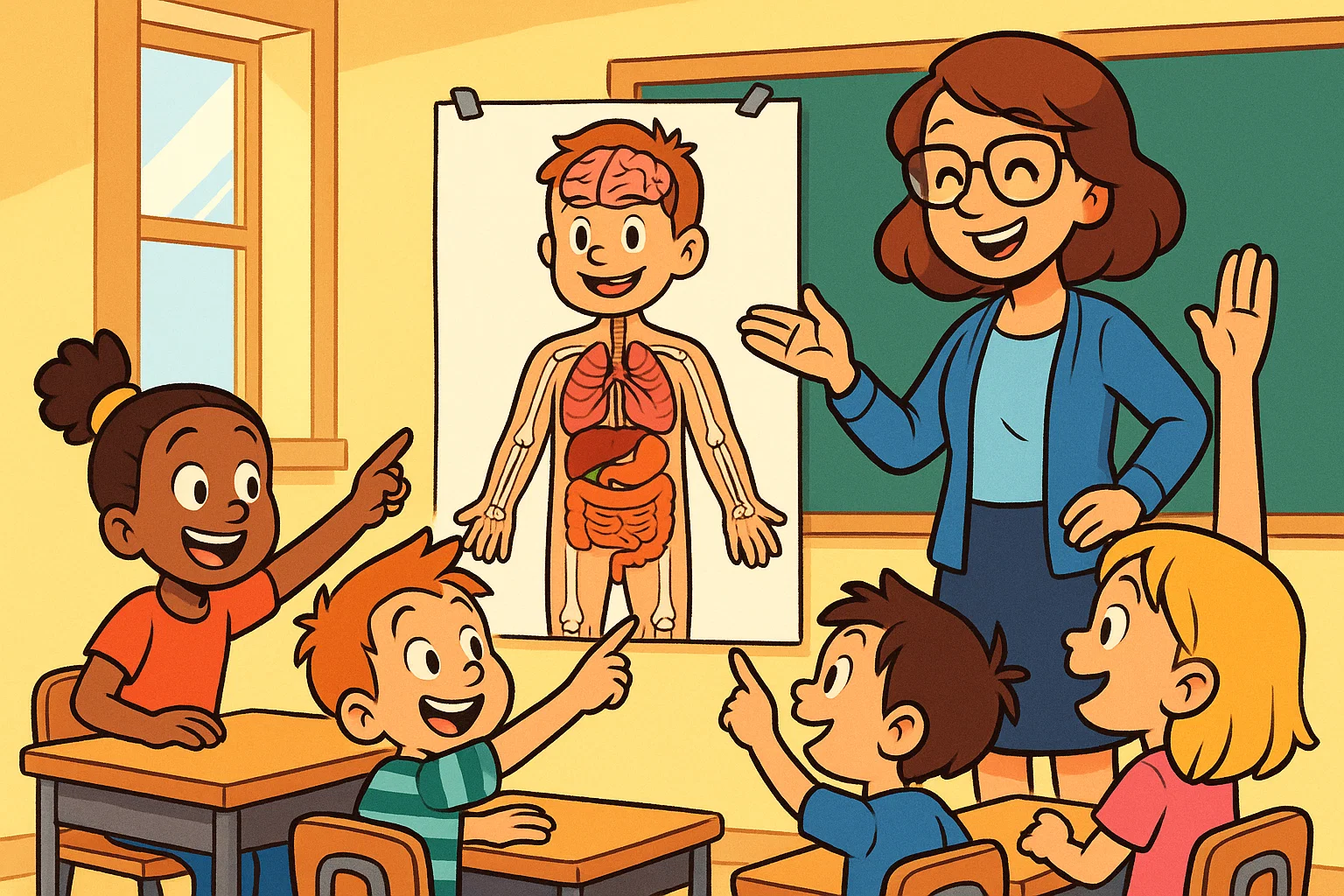
Understanding the human body is one of the most important things children can learn early on. Whether you’re a parent, teacher, or caregiver, helping kids learn the names of body parts in English supports language development, builds confidence, and improves personal safety.
In this guide, you’ll find clear, engaging, and age-appropriate ways to teach kids the names and functions of anatomical zones—from head to toe, inside and out. With charts, activities, songs, and expert tips, it’s time to make learning anatomy fun and meaningful.
Why Teach Children the Names of Human Body Parts
Learning the names of body zones is more than a vocabulary lesson. It lays the foundation for communication, health awareness, and emotional intelligence. From everyday interactions to safety education, knowing different parts empowers children.
Body Parts Can Help Boost Self-Esteem and Confidence
When kids understand their physical selves, they start feeling a sense of ownership and pride. They can describe what hurts, express themselves more clearly, and participate more confidently in physical activities like dance, yoga, and sports. This understanding builds not just language skills but also emotional intelligence. A child who knows how to describe their physical feelings can often express emotional ones better, too.
“Understanding their own physical self helps children feel grounded and secure in themselves.” — Dr. Anita Sharma, Pediatric Developmental Expert
Teach Kids Correct Body Parts for Communication and Safety
Teaching children the anatomically correct terms for private areas and other areas plays a vital role in body safety. It helps kids communicate clearly in medical settings and report inappropriate behavior if needed. Instead of feeling confused or ashamed, they can use the right language with confidence.
Start small: use terms like “elbow” and “knees,” and gradually introduce names like “genitals” or “chest” in age-appropriate ways. Be consistent and calm. Reinforce that every part they have is important and that they should never feel ashamed for naming them.
External Body Parts Names in English for Kids
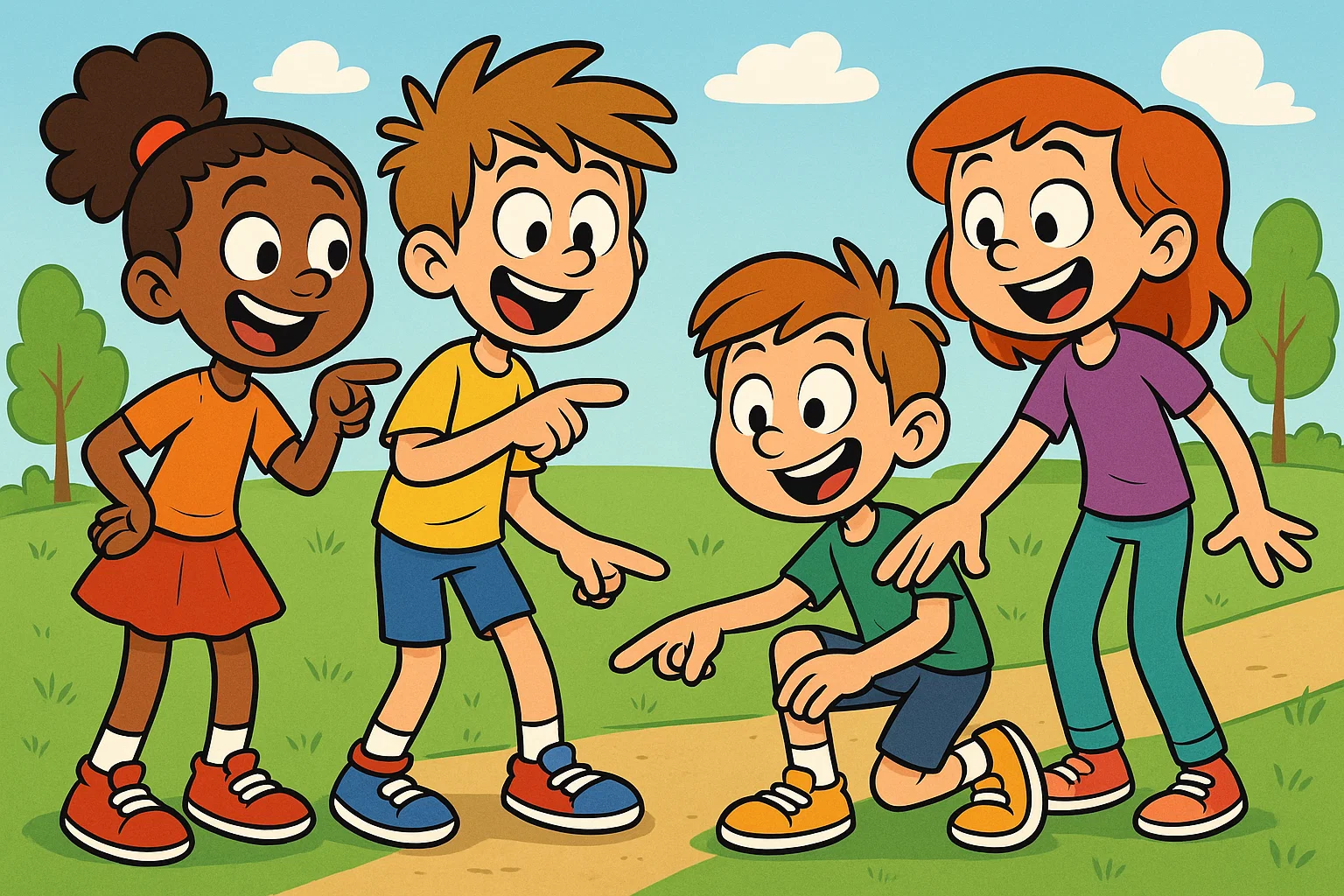
External parts are the ones we can see. Kids use these every day—to smile, run, hug, and draw. Teaching them these names helps connect daily actions to language.
Face Parts with Names and Functions
The face is full of essential tools for experiencing the world. Eyes, ears, mouth—each one has a unique function that kids can relate to easily. Try having them make funny faces while naming each feature.
| Part | Function |
| Eyes | Seeing |
| Nose | Smelling |
| Ears | Hearing |
| Mouth | Talking, eating |
| Tongue | Tasting |
| Teeth | Chewing |
| Eyebrows | Protect eyes from sweat |
| Eyelashes | Keep dust out of eyes |
Upper Body Parts: Arms, Chest, and Torso
Kids are always moving their arms and hands—whether they’re throwing a ball or hugging a parent. This makes the upper portion of the body an exciting area to explore and label. You can point out these areas during dressing or playtime.
The main torso portion includes the chest and back, which protect critical internal organs. Understanding this helps kids know how their heart and lungs stay protected.
Lower Body Parts: Legs, Knees, and Feet
From running in the playground to hopping on one foot, children love using their legs and feet. You can help them learn by turning movement into a naming game: “Touch your knee! Can you wiggle your toes?”
Understanding these extremities can also improve coordination and safety. For example, knowing where the ankle is can help a child explain an injury if they fall.
Internal Human Body Parts and Organs
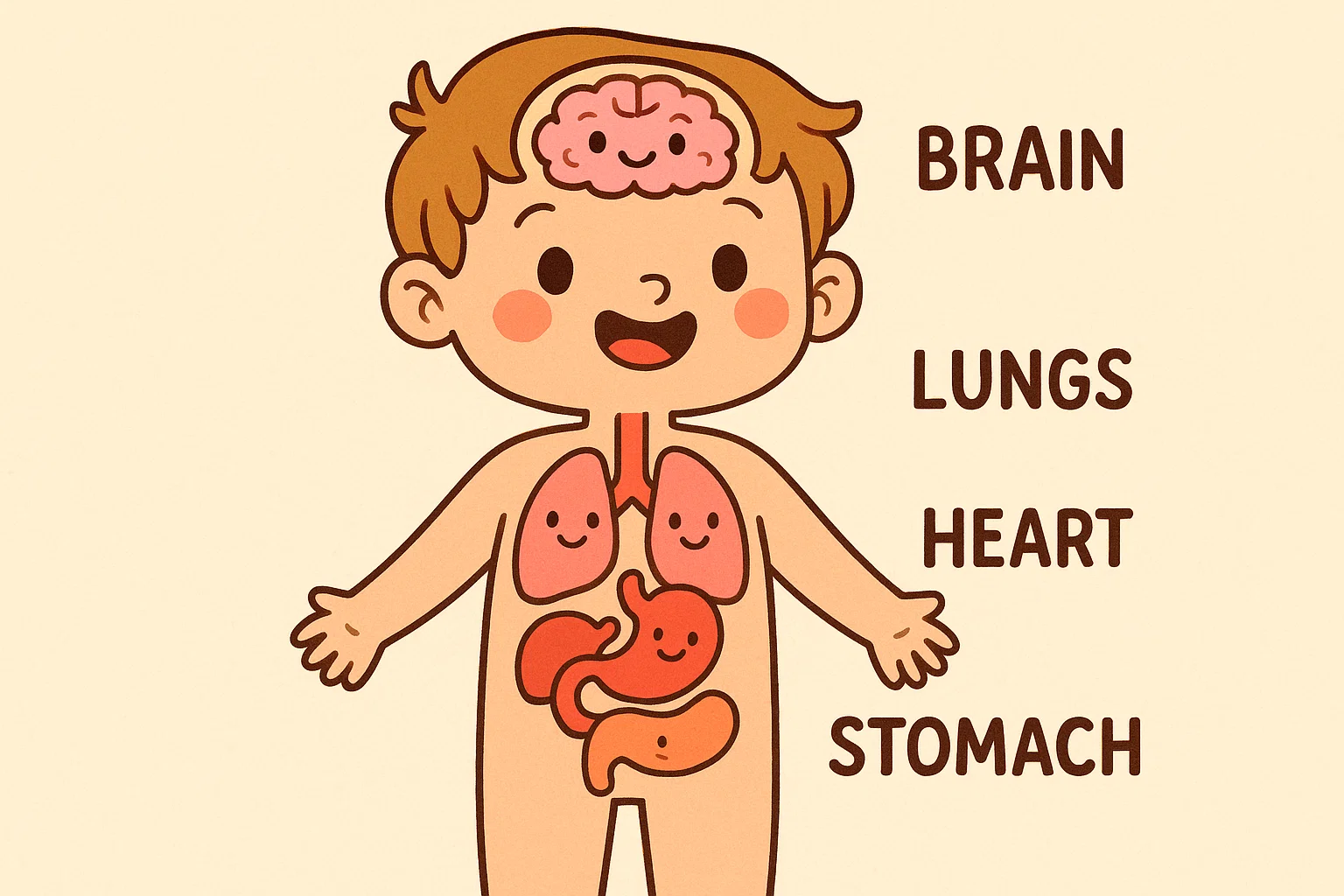
Once kids grasp what’s on the outside, you can begin to introduce what’s happening inside our body. Although not visible, these internal organs carry out important functions that keep us healthy. Keep explanations simple and visual.
Important Internal Organs and Systems for Kids
Internal organs may sound complex, but with the right visuals and comparisons (like “the heart is like a pump”), children quickly catch on. These organs belong to systems that work together to help us perform our daily functions.
| Internal Organ | Function |
| Brain | Controls thinking, emotions, and actions |
| Heart | Pumps blood through veins and arteries |
| Lungs | Help us breathe |
| Stomach | Digests food |
| Intestines | Absorb nutrients and remove waste |
| Kidneys | Filter blood and make urine |
| Liver | Filters toxins and supports digestion |
Each organ system is essential for human survival. They all serve different but coordinated purposes inside our body.
Lesser-Known Internal Parts of the Body to Learn
For older kids or curious learners, introducing lesser-known anatomical names keeps learning engaging. It’s okay to keep definitions simple but accurate.
- Esophagus: Carries food to the stomach.
- Bladder: Stores urine.
- Pancreas: Helps with digestion and blood sugar.
- Gallbladder: Stores bile.
- Spleen: Part of the immune system.
These may be harder to see in illustrations, but they’re a valuable part of any complete list of names to teach.
Body Parts Chart for Kids
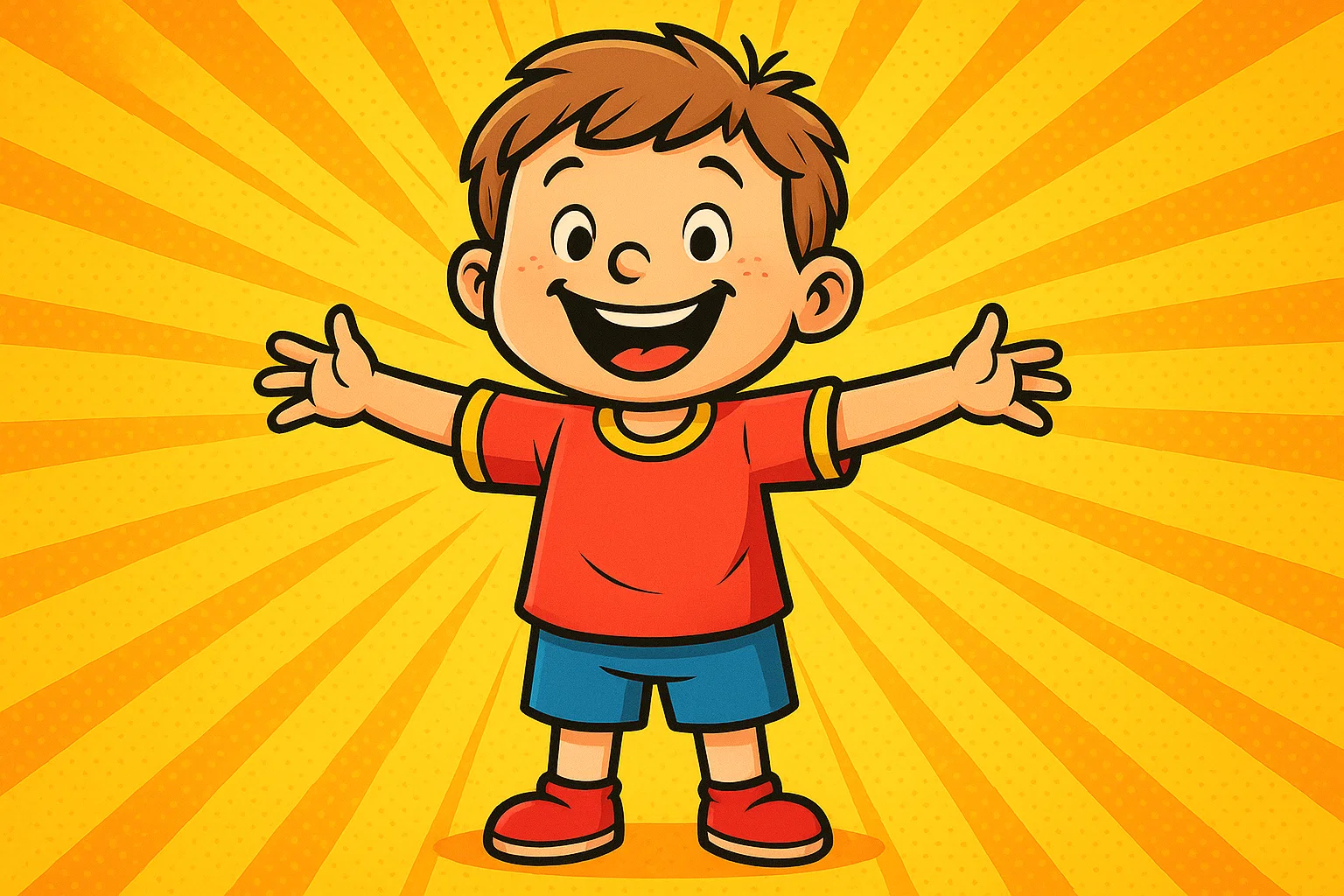
Visual aids go a long way in helping children recognize and memorize parts of body name vocabulary. When kids see both the image and the word, they make stronger mental connections.
External Body Parts Names Chart in English
These charts are especially useful in early learning environments. Use colorful, friendly designs that show every part of our body from head to the waist and down.
You can hang charts in your child’s room, classroom, or even carry laminated flashcards on the go. They’re helpful for children learning English with pictures.
Internal Organs and Systems Chart for Kids
For internal areas, charts should be simple and clearly labeled. Some even use transparent overlays to show where organs are located. Encourage your child to point out where the organs are located inside their torso or chest.
Activities to Teach Kids Human Body Parts
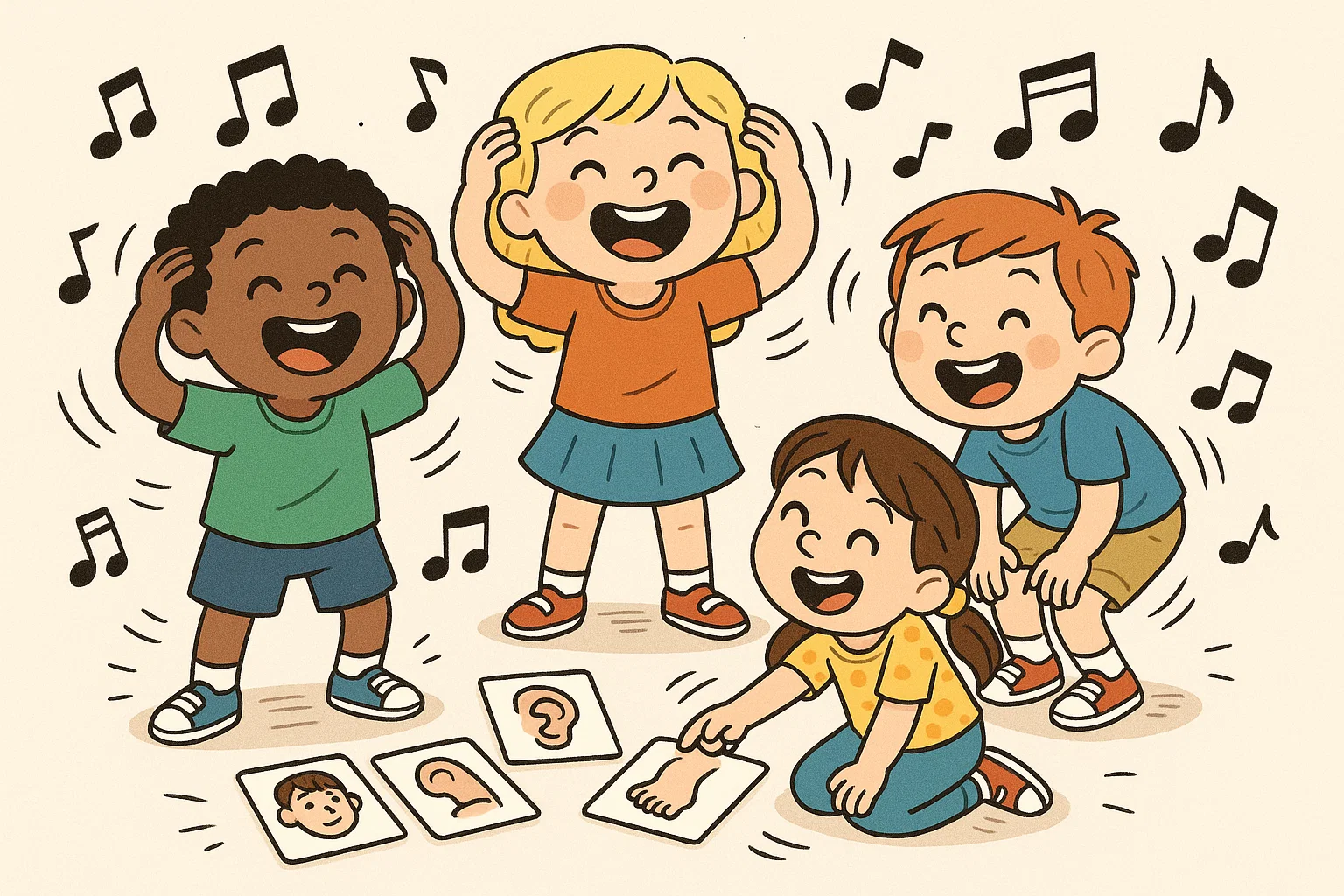
Passive learning doesn’t stick. To truly help kids understand themselves, you need to get them moving, singing, drawing, and imagining.
Learn the Names with Body Parts Songs and Rhymes
Music is a great way to teach names for body parts. Rhymes like “Head, Shoulders, Knees, and Toes” make it easy to remember basic body parts and their functions. Add more verses over time to include words like “wrists,” “ankles,” or “hips.”
This also helps with rhythm, pronunciation, and memory—perfect for teaching English for kids.
Fun Activities to Teach Children Body Part Names
Interactive play is where learning really comes alive. Classic activities like “Simon Says” or sticker match games work wonders. Children love turning learning into play.
Real-life moments like bath time or getting dressed can also be teaching opportunities. Say the name of each part as you help them zip a coat or tie shoes.
Stories and Drawing to Help Kids Learn Human Body Parts
Books and drawing help older kids connect ideas with visuals. Ask them to draw a picture of themselves and label parts from the list of body parts you’ve introduced. Or let them invent characters with unique anatomical features and describe them.
Storytelling also helps kids connect each part to its job. “Your stomach tells you it’s hungry!” is both fun and informative.
Creative Ideas to Teach Body Parts Names in English
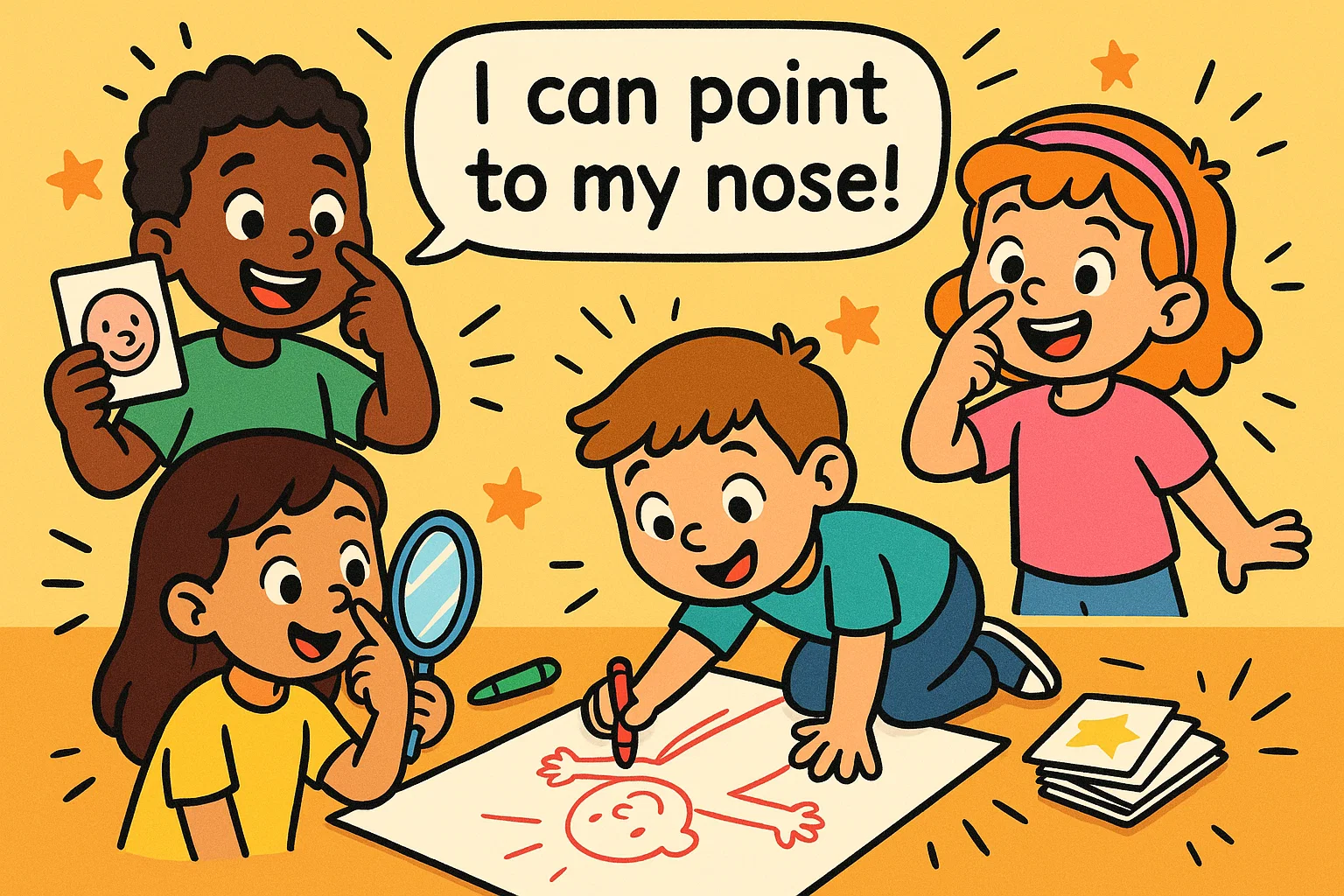
If your child learns best through movement or visuals, these methods will work wonders.
Flashcards and Visual Aids for External and Internal Body Parts
Flashcards can be used in memory games, matching challenges, or scavenger hunts. Mix and match visible features with internal organs to build a strong overall understanding of the human form.
Try including lesser-known labels from anatomical charts for advanced learners.
Mirror Play and Role Play to Teach Your Child Parts of the Body
Let your child look in the mirror and identify each feature. Turn it into a game: “What helps you chew?” or “Can you find what helps you smell?”
Role-playing with dolls or plushies can also reinforce the names and uses of parts of the human body, including private areas in a safe, age-appropriate way.
Yoga and Physical Activities for Kids to Memorize Body Parts
Yoga poses help kids feel and name different parts while they move. Breathing exercises introduce how the heart and lungs work together. Tree Pose can focus on arms and legs, while Cat-Cow helps explain how the spine works.
This is a fun and interactive way to reinforce the function and names of different body parts or organs.
Learn the Names of Body Parts for Kids in English
Every part of the human body is important. Teaching both external features and internal organs—using correct terms and fun techniques—can strengthen language, self-awareness, and health understanding.
By making the process fun and consistent, you’re giving your child the tools they need to grow up safe, informed, and confident. It’s time to teach with creativity, clarity, and care.
FAQs on Human Body Parts for Kids
What is the Easiest Way to Teach Kids Body Part Names?
Use repetition, songs, and interactive games. Start with visible parts like arms and legs and move on to internal organs with visual aids and storytelling.
What are the 7 Major Internal Organs and Systems?
- Brain (Nervous system)
- Heart (Circulatory system)
- Lungs (Respiratory system)
- Stomach (Digestive system)
- Liver (Digestive system)
- Kidneys (Urinary system)
- Intestines (Digestive system)
What’s the Difference Between External Body Parts and Internal Organs?
External parts are those we can see and touch, such as legs and arms. Internal organs include vital components like the heart, lungs, and stomach. Teaching both helps kids understand how the human body is made and how all parts work together.
